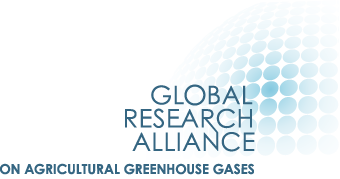Agricultural activities like the production of livestock result in a lot of greenhouse gas (GHG) emissions. Beef cattle release a large amount of methane (CH4) as a result of digesting feed materials in the rumen; these are enteric fermentation emissions. Manure storage and handling in beef cattle operations can also be a significant source of GHG emissions – CH4 and nitrous oxide (N20) emissions. Selective breeding of cattle using a genetic marker for low residual feed intake (RFI) can result in a population of cattle that are more efficient in their digestion of feed. Increased efficiency of feed utilization reduces enteric fermentation emissions released by these bred cattle to compared to other cattle. The increased feed utilization efficiency of these RFI cattle also reduces the amount of manure that is produced, which further reduces the greenhouse gas emissions associated with cattle operations.
Livestock sector experts and agricultural scientists have developed a Tier 2 accounting procedure for enteric and manure emissions generated by different cattle classes in Canada through the Intergovernmental Panel on Climate Change (IPCC) and Canada’s National Emissions Inventory (NIR). This serves as the foundation for quantification methodologies in this protocol. The scope of this protocol is limited to enteric fermentation emissions and associated manure greenhouse gas emissions from beef cattle using a functionally equivalent metric of emissions per kilogram of live cattle weight.
Alberta Environment – Climate Change Secretariat
2012


 Resource Link
Resource Link